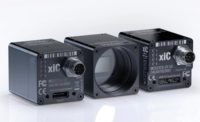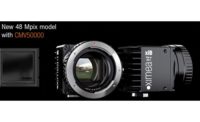Ximea introduced new models using Sony Medium format BSI sensors with exceptionally high resolution.
The new members of the xiX family deliver resolutions starting from 61 Mpix and going up to 151 Mpix, all based on backside illuminated technology from Sony.
Enhancing these premium quality sensors with the speed of PCIe interface results in 61 Mpix at 17 Fps, 101 Mpix at 8 Fps, 151 Mpix at 6 Fps and more with Binning.
As is a good habit with Sony, specifically with their BSI sensors, these also present a very high level of Quantum efficiency attaining the 90% sensitivity.
Hand in hand with these impressive figures goes the remarkably low noise, in some cases staying close to values of 1 e-.
Each of the sensors offers high Dynamic range of 80 dB resulting in top grade pictures at 16 bit in RGB or black and white.
All of these new camera models feature the Dual ADC that combines readout from low and high gain modes, the fusion of which produces HDR images.
Even though these sensors have a relatively small pixel size of 3.76 µm, the full well capacity (saturation) is extending well above 50 000 e-.
The small pixel allows the sensors with high resolution, above 150 Mpix, to stay very compact contributing to closer proximity for multi camera setups.
This is particularly useful with flat ribbon flexible cables that help integrate the cameras into compact embedded systems like UAV and other mobile platforms.
On the other hand, another benefit of utilizing the PCIe interface is the ability to reach distances of up to 100 meters with fiber optics cables.
For various heat dissipation options, several heatsink modules are developed - the default one is a Fan attached to the back of the camera.
To eliminate any vibrations and decrease the heat even further a module with Water (liquid) cooling is being prepared as well.
Another way to fine-tune the camera or multiple cameras is the ability of these models to separate the sensor head from the camera body.
Not only does it lower the initial heat considerably, leaving it in the camera body, but also enables to combine several camera heads into multi camera systems.
Both passive and active lens mounts are planned to be available - starting with a mechanical M72 mount and active EF-mount.
The active EF-mount for example allows remote control of aperture, focus and image stabilization.
Different types of lens mounts can help with offsetting the Rolling shutter, specifically in Photogrammetry applications Besides the capability to operate the lens, there are also ways to Synchronize the cameras through software and hardware - via trigger cables.
Ximea
http://www.ximea.com



